

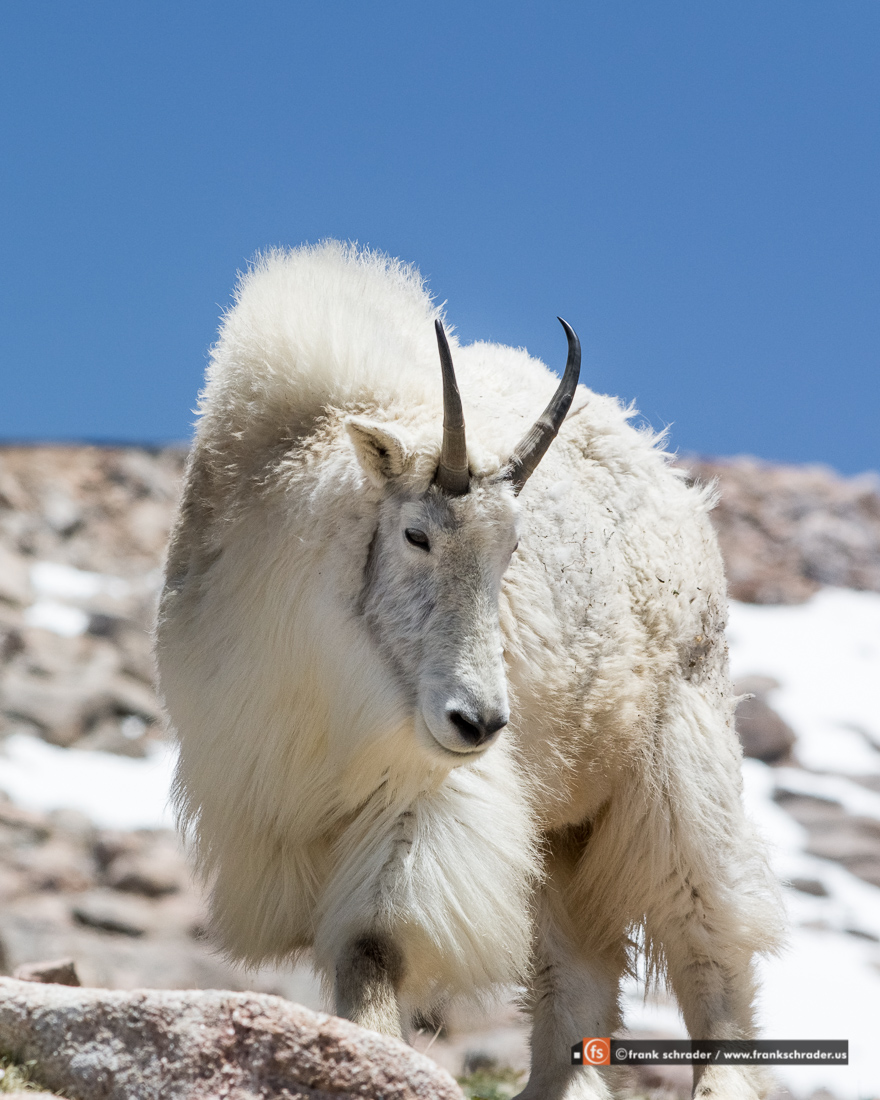
One the best scenic drives in Colorado and the views are just spectacular.
You can drive all the up to the summit parking lot. Only the last ca. 200 m / 400 ft have to be managed by walking which is for many people difficult due to the thin air.
During your drive up to the summit there are warning signs that you might experience nausia due to the lack of oxygen.
Only 35 miles from Denver and starting in the historic community of Idaho Springs, the 28-mile drive crests at Mt. Evans Peak.
Though a portion of the Byway (Highway 103) is open year round to Echo Lake, the road to the summit usually closes in mid-September and opens Memorial Day weekend due to the 10 to 75-foot snow drifts on the summit road.

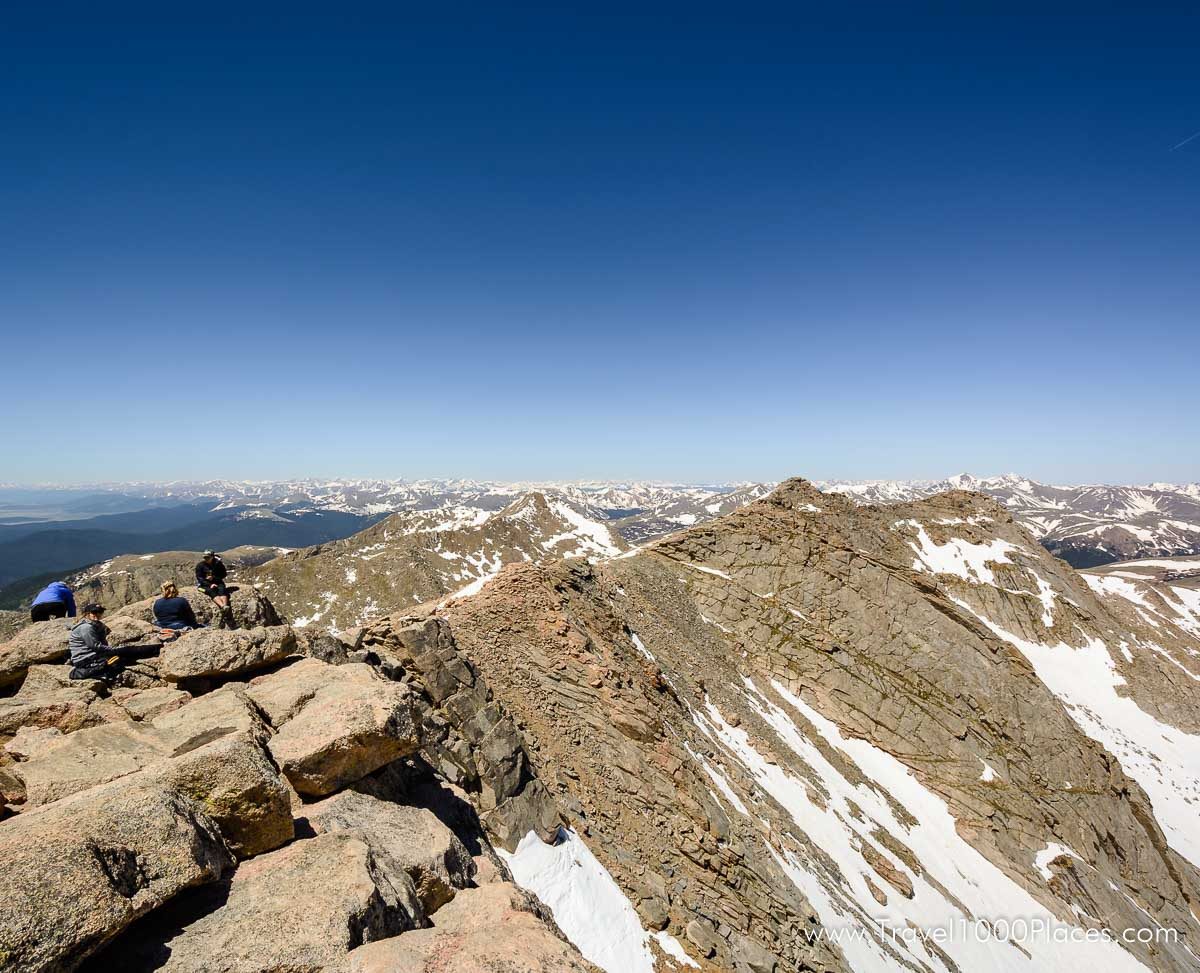
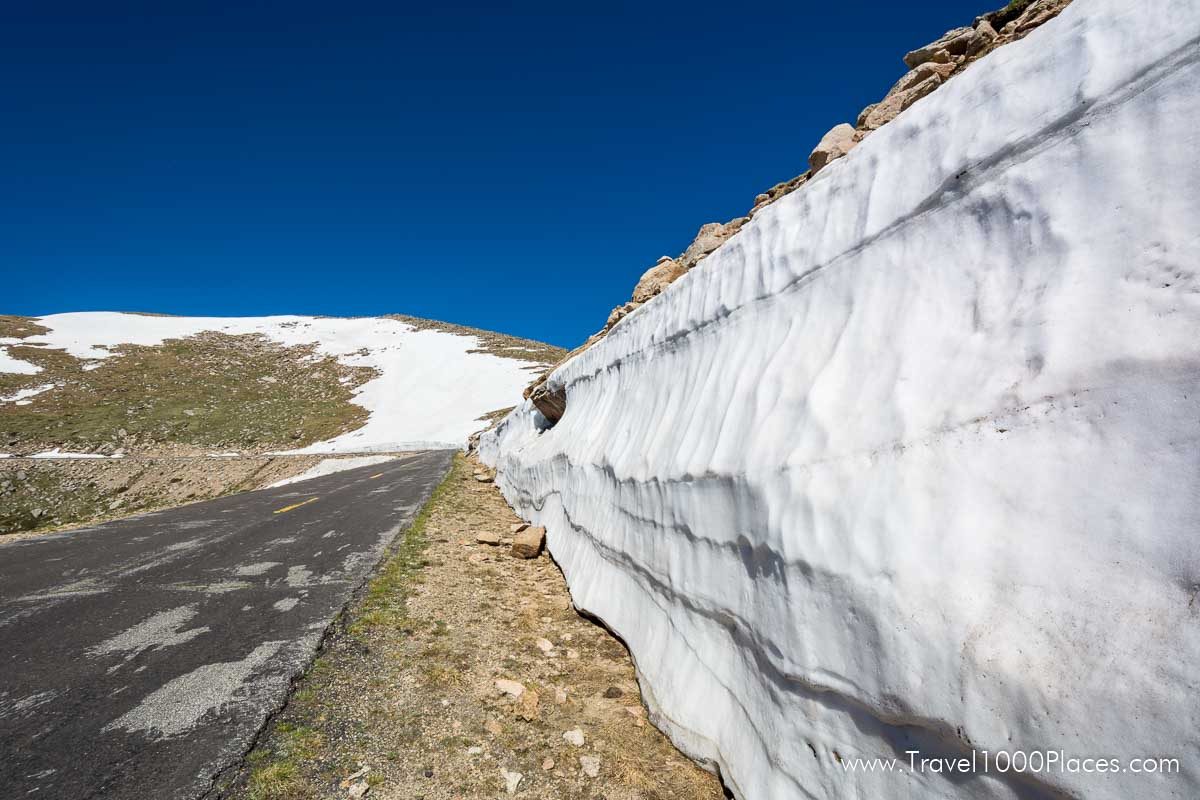

You can view the entire Front Range and the Continental Divide from Mt. Evans’ 14,264-foot summit. You’ll also experience the same flora and fauna life zones you would find in the Arctic Circle. In addition, you might spot herds of Rocky Mountain bighorn sheep, Colorado’s state animal.
During your climb up the Mt. Evans Scenic and Historic Byway from Idaho Springs, you will pass several mountain lakes, including Echo Lake at 10,600 feet, Lincoln Lake at 11,700 feet and Summit Lake at 12,830 feet. There are trailheads from the road leading to the lakes. Overall, there are more than 100 miles of hiking trails on Mt. Evans. Mountain and road bikers often traverse the Byway to enjoy the scenic magnificence as well.
There are three plant and animal zones along the Mt. Evans Scenic & Historic Byway.
The first, the montane zone, is the traditional forest environment you see at around 7,000 feet at the beginning of the Byway. Here, you’ll see ponderosa pine and Douglas-fir, along with deer, weasel, porcupine, fox, chipmunk, squirrel, black bear and beavers.
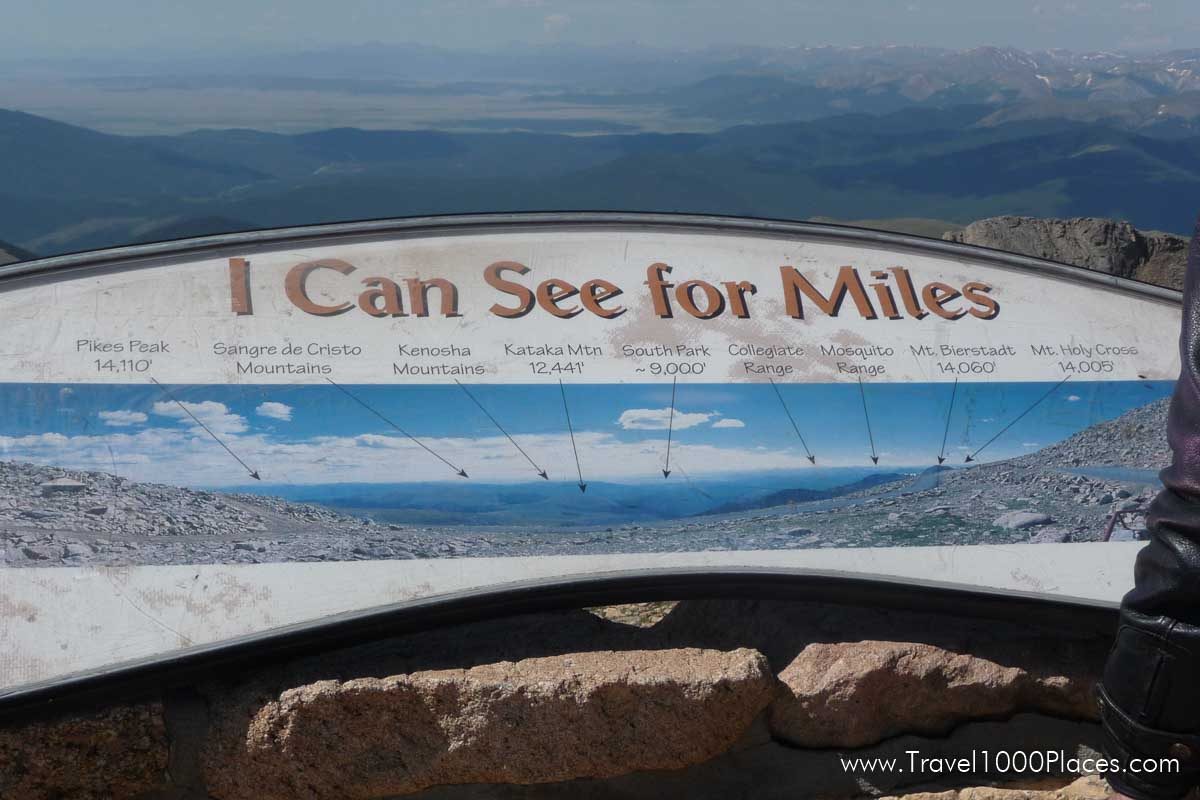
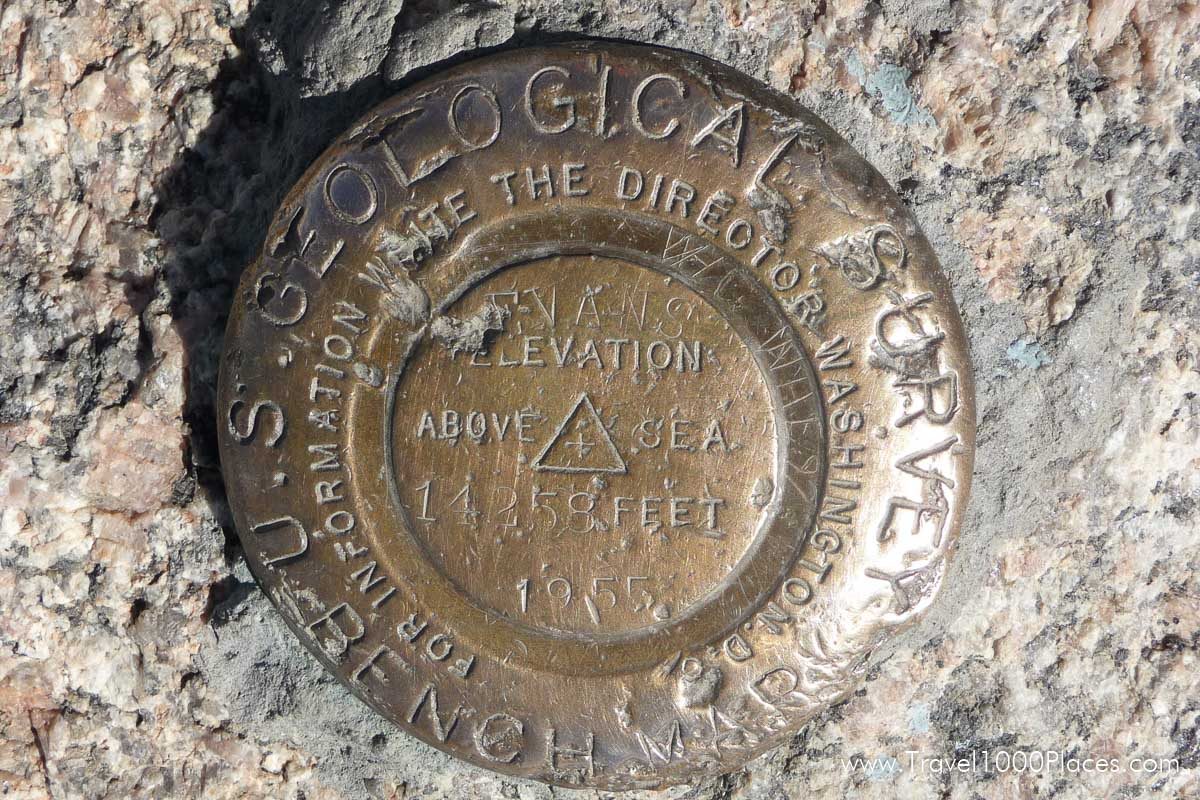
The subalpine zone begins at 8,000 feet. Vegetation varies here, but you still can see the bristlecone pines, dense thickets of skinny lodgepoles, aspens and Englemann spruce. The lodgepole cones adapted to survive many fires by producing lots of seed, which makes for a dense forest. Although you may get a glimpse of elk, the subalpine zone is home to smaller animals like the yellow-bellied marmot, badger, ermines and pikas.
At 12,000 feet, you’ll hit timberline. Here, intense solar radiation, high winds and freezing temperatures prevent the growth of vegetation larger than a bush. Above timberline is the alpine zone where you’ll see alpine tundra–wild flowers and other small plants specially adapted to the short growing season at this high elevation.
Mt. Evans is one of the few areas below the Arctic Circle where alpine tundra is found. The rocky alpine zone is a hospitable area for the sure-footed bighorn sheep and white mountain goat. Notice the horns on the male bighorn sheep–you can tell the ram’s age by the rings of growth laid in the curl. But this is no petting zoo. Rangers caution us that these are wild animals that bite and ram with their horns. There is a fine for anyone caught feeding the animals. Please keep a respectful distance.
The flora is extremely vulnerable. There are still areas along the road trying to re-vegetate years after clear-cutting took place for the road construction.
Sudden changes in weather are not uncommon along the Mt. Evans Scenic & Historic Byway. Daytime temperatures often plummet with the arrival of a cloud or the stirring of the wind. Expect at least a 15 degree difference between Idaho Springs and the summit of Mt. Evans. Snow is possible at any time, and in summer thunder showers are frequent in the late afternoon.
How to get there
From Denver drive on the I-70 to Idaho Springs, Exit 240. Turn left at the first junction, direction south-west. (At the junction you’ll see a gas station adjacent of your position). You are now on Colorado Highway 103. Follow the road to Echo Lake. Shortly after the lake turn right onto Colorado State Road CO 5. After ca. 100 yards (300 ft) you reac the park entrance.
Admission
It’s a U.S. State Forest and the respective fees apply. Approx.: $10 per vehicle.
Camping
Echo Lake has a campground with ca. 18 sites.

